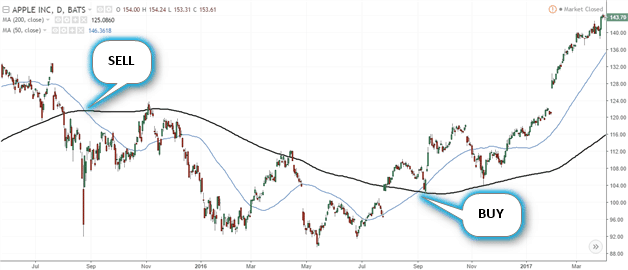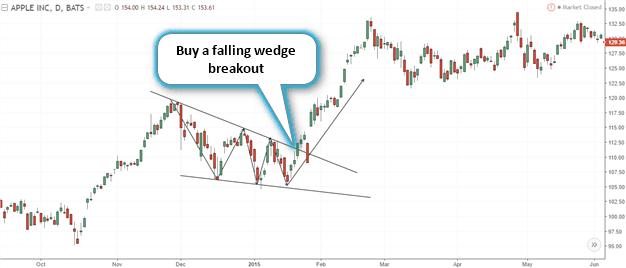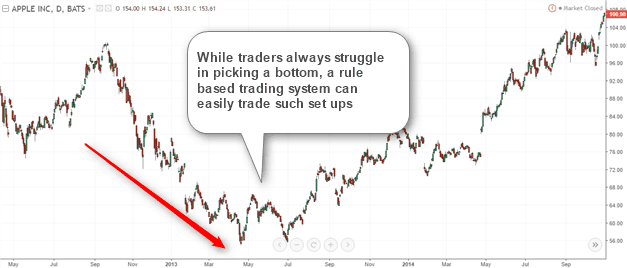
Trading Systems
Trading systems or a trading strategy is the backbone for all types of traders. While money management and risk management plays a major role in determining one’s success in trading, without a trading system or a strategy a trader has nothing else to do but to sit on their hands.
Perhaps, the importance of trading systems and strategies can be best gauged based on the eco-system that it has spawned.
Today, a trader is not short of choices with a wide range of black box trading systems and strategies available at one’s disposal.
Browsing through any of the many trading forums, it is not hard to miss the section about trading systems and strategies.
Look to any reputable trading magazine and you are bound to find a section related to stock trading systems. It could a simple technical analysis based trading strategy, and it can get as complex as using fundamentals.
There is a very strong likelihood that a trader will spend most of their time honing their skills on a trading system. It is through this process over evolution that a trader finally catches on a system or a style that works best for them.
What is a trading system?
A trading system is a set of rules that can be based on technical indicators or fundamental analysis. A trading system tells the trader when and how to trade. In many cases, trading systems act like a blueprint for trading.
A trading system is important for a trader because without it, there is no way a trader can expect to trade. Despite getting lucky a few times, one cannot expect to remain consistently profitable without following a trading system or a strategy.
What are the different types of trading systems available?
Trading systems can be broadly classified into two types:
- Mechanical trading system
- Discretionary trading system
Everything else is either a clone of one of the above two. You can have a trading system based on technical indicators and you can also have a trading system that focuses on the fundamentals.
There is no telling which of the above two approaches are better. But it is known for sure that the more familiar a trader is with their trading system, the better their odds at being consistently profitable.
What is a mechanical trading system?
As the name suggests a mechanical trading system is based on a set of trading rules. The trading rules are developed when several technical or fundamental indicators trigger a buy or a sell.
A mechanical trading system is the easiest to automate as there is not much of discretion involved.
A buy or a sell trade is initiated when the trading conditions are met.
An example of a mechanical trading system could be something as simple as a moving average cross over.
Now instead of having to wait for the 50 and 200 day moving average to trigger a bullish or a bearish crossover to buy or sell, a trader can simply code these rules into an algorithm which will constantly monitor the markets.
As and when the trading conditions are met, the appropriate trade is taken.
You can see in Figure 1, the stock chart for Apple Inc. (NYSE: AAPL). Here, the thick line is the 200-day moving average and the thin line is the 50-day moving average.
A simple mechanical trading system here would be buy on a bullish crossover and to either book profits after price moves a certain percentage or to exit after price moves a fixed amount.

Figure 1 – Example of a mechanical trading system based on moving averages
What makes this system mechanical are the set of rules that govern whether the stock or security is to be bought or sold.
In the first instance, the shorter moving average (50-period SMA) crosses below the longer moving average (200-day SMA). Also, known as the death cross, this signals that the market is bearish. Therefore, short positions are taken (or even perhaps previous long positions could be liquidated.
Later, following the bullish crossover of the 50 and 200 day SMA, or the Golden cross a long position is initiated.
The above system is mechanical because there it not much of discretion involved and the rules are straight to the point.
Most of the automated trading systems are mechanical in nature. Although there are quite a few complex algorithms based trading systems that can also be discretionary.
A mechanical trading system can also be developed based on fundamentals as well. For example, you can program or trade a mechanical trading system based on a stocks’ earnings release by analyzing the past behavior and considering the street’s expectations.
You can also develop a mechanical trading system on macro-economic factors such as the U.S. non-farm payrolls release and so on.
Pros and cons of a mechanical trading system
A mechanical trading system is good when:
- The rules are very clear and leaves no room for any discretion
- It can be easily coded or programmed
- It can be easily back tested to check the past performance of the trading system
- Traders can view the back testing and forward testing data to further fine tune the trading system
- A mechanical trading system leaves out any room for emotions and is purely based on logic
- There is no need for human interference for a mechanical trading system
A mechanical trading system is not always ideal in conditions such as:
- Uncertain markets where fundamentals can cloud the trading system’s ability to trade
- Using too complex or custom indicators or trading rules
- Coding or programming errors
- Curve-fitting the trading system to show favorable results on past performance
What is a discretionary trading system?
A discretionary trading system is where the trades are based on a mix of trading rules and experience. In some cases, discretionary trading systems can easily trump mechanical trading systems.
The discretionary trading system is comparatively complex than a rule based trading system.
It can be difficult to code a discretionary trading system as the buy and sell rules can change at every instance. Thus, there is no uniformity involved and the success of using a discretionary trading system largely depends on the trader’s familiarity with the system
A classic example of a discretionary trading system could be based on fundamentals. This could be as simple as analyzing the comments from an earnings call. You can also combine various macro-economic factors to determine what the next monetary policy decision will be.
A discretionary trading system requires the assistance of a human and therefore it is difficult to build one.
Look at the next chart below. In Figure 2, we have a falling wedge chart pattern.
Plotting or identifying a falling wedge isn’t an exact science but an art. The only way one can hone their skills is by experience. Still, every time will be different as a trader will need to adjust their analysis accordingly.

Example of a discretionary based trading system
While it is possible to plot trend lines, coding the different variations of a wedge chart pattern for example can be tedious and can throw a lot of errors.
Sure, you will find some trading signals this way by means of automating the process to hunt for such chart patterns. But there is a very good chance that your automated trading system could miss potential trade set ups, or even worse lead you into a false signal as well.
Pros and cons of a discretionary trading system
A discretionary trading system also has its pros and cons.
Trading with a discretionary trading system is ideal when:
- A trader is manually trading and analyzing the charts
- A significant amount of fundamentals play a role in shaping the outcome
- A trader needs to be adept in the discretionary trading system that they use
Many beginners to day trading often shun the idea of using a discretionary trading system and here’s why.
- A discretionary trading system requires years of practice so the trader is familiar with the strengths and weaknesses
- You can expect to take losses in the early stages of trading with a discretionary trading system
- Because there are no clear rules, a trader must focus on all the available information and gauge what the markets will do
The auto-trading system
The auto-trading system is no doubt one of the most popular ways to day trade. It can be particularly beneficial in certain markets such as futures which allows you trade on leverage with low margin requirements.
Since the market is nothing more than the emotional sum of its participants, an auto trading system will allow a trader to separate themselves from the noise and emotions.
This is the power of trading systems as it can help you to eliminate the two most common emotions: Greed and Fear.
The system will execute a trading signal regardless of what the investor may be emotionally feeling at the time the trade is initiated. For example, a manual trader would have found it difficult to be long in the markets during the crash such as the 90’s dot-com bubble or the 2008 global financial crisis.

It is easy for a trading system to trade based on rules compared to a trader where emotions can play a big role in the trading outcome.
On the other hand, an auto trading system would have easily picked up stocks at a discount purely based on logic and rules but devoid of any emotions.
Despite being somewhat risky (picking stocks during a market crash) and especially when one doesn’t know when the selling has abated, an automated trading system also has in-built mechanisms to minimize losses as well.
Auto trading systems are a core component of direct access brokers and day trading professionals. Most retail shops will only offer buy and sell orders, but not fully automated trading.
The direct access broker TradeStation Securities, allows a trader to develop strategies utilizing TradeStation’s coding script – easy language. Easy language allows a trader with little to no development experience to write complex buy and sell strategies.
Depending on the trading platform you are using, there are different programming languages that can be used to automate your trading strategies.
These systems can then be used to execute live trades in the market. Most trading platforms allow the trader the choice of the orders being sent to the market immediately or user authorization prior to execution.
Order authorization allows a trader to apply some sense of subjectivity to a trading system. Requiring authorization can also be a dangerous game as a trader never knows when a trading signal will work in their favor. This falls in the grey area between a mechanical trading system and a discretionary trading system.
Therefore, it is best to let the trading system execute the trading signals against trying to pick and choose which signals to take. In a way, it defeats the purpose of the independence of the trading system.
Reviewing a trading system
Whether it is a discretionary or a mechanical trading system being used, one must thoroughly examine the strategy. Presently, there are many solutions that offer to analyze your trading systems for you, giving you a detailed report on the pros and cons.
This is a huge timesaver compared to having to analyze the trading system all by yourself.
It is ultimately up to the individual investor to perform his or her due diligence on the trading system that they want to use.
The key thing to remember is to not only focus on the gains over a specified period of time, but also the maximum drawdown and risk exposure of the system.
For example, if a trading system that trades during a bear market is making a lot of profits when the markets are falling, it doesn’t mean much. The trading system should also be tested during a market uptrend as well.
Other factors to consider include understanding what assets to use the trading system on, and the time frame for holding the trades as well.
Remember, it’s not the system, but rather your blind belief in the strategy that will ultimately lead to success.










 Awesome Day Trading Strategies
Awesome Day Trading Strategies 
